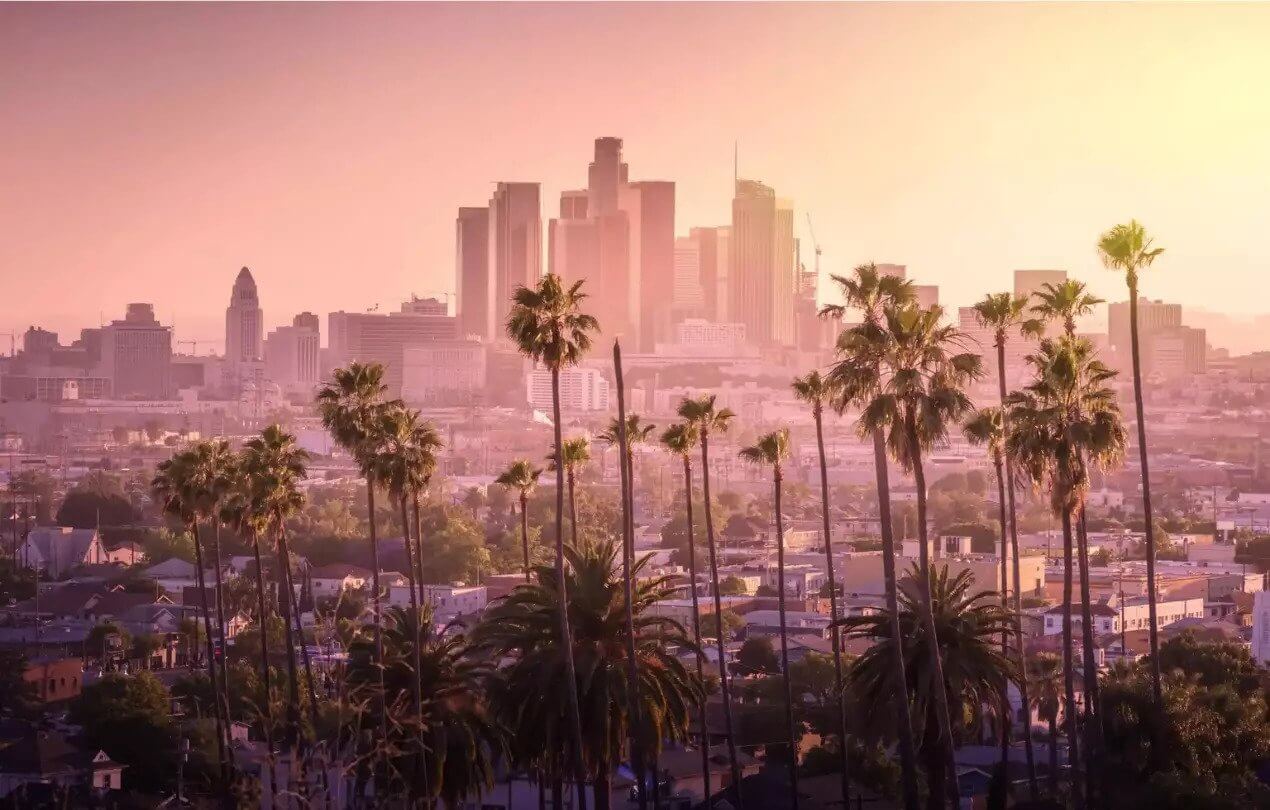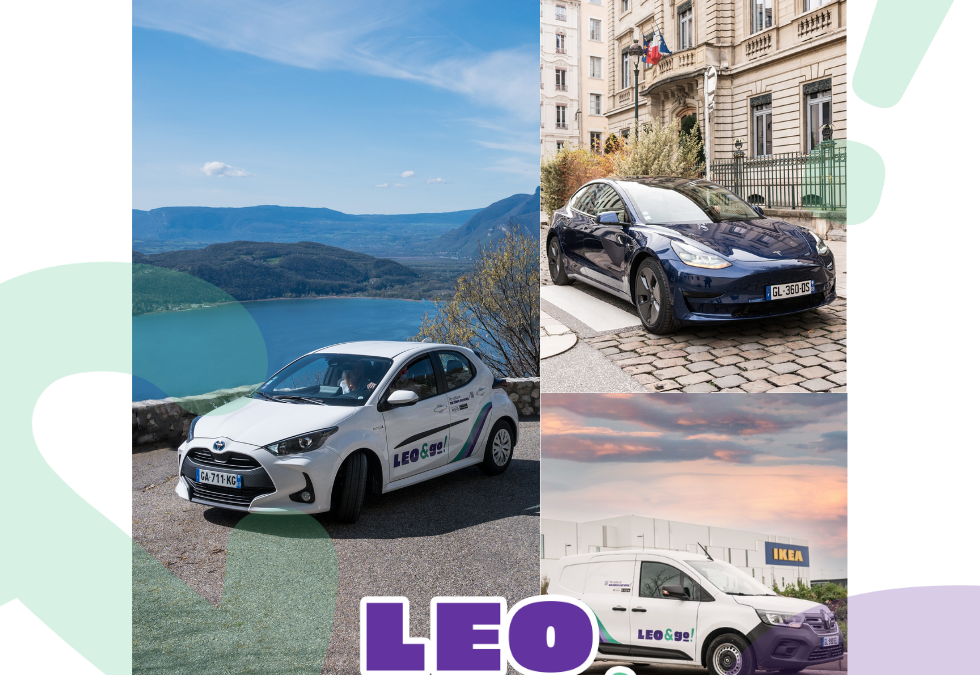Vulog recently connected with Seleta Reynolds, General Manager of the Los Angeles Department of Transportation (LADOT) appointed by Mayor Eric Garcetti.
LOS ANGELES. November 30, 2020 With LADOT’s Seleta Reynolds, we delved into how transportation facilitates socio-economic equality, the importance of shared mobility in the city’s Covid-19 strategy, and LADOT’s effort to create safe streets with project Vision Zero.
Why did you decide to start working in mobility?
I grew up in Jackson, Mississippi, and did my studies at Brown University. I came into transportation almost by accident. My first job out of college was in Oakland where I had an internship with the bike parking program. What I loved most about it was its proximity to local government. I loved watching how decisions were made, I loved learning about transportation, because I didn’t really have any educational background in it, so I learned a lot of what I know on the job. It is a field where there is an opportunity to make a difference and at the same time, it is a field where you will always be humbled by all of the things that you have left to learn.
Tell us about your role at the Los Angeles Department of Transportation (LADOT) as well as some of your major projects.
LADOT has a pretty broad portfolio: we have about 7500 miles of streets that we manage and operate which includes 5,000 and 37,000 spaces. We have a transit system that we operate – Dash, Commuter Express, and Cityride – that carries about 20 million rides on an annual basis. We also have a few microtransit projects on the west side and downtown that we have been piloting. Our success, however, relies on our ability to collaborate across agencies and across other cities in the region as we are just one of the 88 cities inside LA County, which is massive – 1 in every 35 Americans live here!
We have created a lot of initiatives under Mayor Eric Garcetti’s leadership to directly address challenges that people face when moving within LA. That includes Vision Zero, which is our goal to have zero traffic deaths. We are also focused on the electrification of our bus fleets and changing the way that we think about public transit to include carsharing and micromobility. We have the largest shared micromobility fleet in the United States with about 35,000 e-bicycles and e-scooters. We have also launched, through a public-private partnership, a fleet of shared electric cars.
If we can start to think about all of these different projects as components of a public transportation system that requires an investment of public dollars – the same way that the bus or the train does – that allows us to start thinking about how we can close the gap between the number of opportunities that you can reach if you own a car versus if you don’t. You can reach about 12 times as many jobs in an hour by car as you can in an hour by transit. Our success in closing that gap is the key to success around solving a whole host of problems including directly addressing racial inequalities, socio-economic inequalities, and climate.
Can you speak more about transportation and its link to racial and socioeconomic inequalities?
Unlike in Europe, in the United States freeways were laid down directly through cities. They were organized intentionally to scatter black and brown communities. We have this legacy now where low-income neighborhoods bear the brunt of living near freeways. Negative health conditions are more pronounced in their shadow including respiratory diseases like childhood asthma, as well as mental health issues like dementia and depression, cardiovascular issues, and obesity. When Covid arrived, which is a respiratory disease, it is not a surprise that all of these neighborhoods were the places that were disproportionately impacted.
Because of this history, when we as representatives of the government come to these neighborhoods and say “I really want to make your streets better, because the data I have shows me that people are getting injured and killed here,” there’s a high amount of suspicion and distrust about what we are really trying to do. Understandably so, because we are the ones who are responsible for all of those decisions that came before – and that resulted in the negative outcomes that currently exist in the first place.
How do you think shared mobility can become a part of the solution for making LA more sustainable?
I think shared mobility is essential. It fills a critical need as millions of shared trips are made on a yearly basis. There is also a carbon offset even accounting for the lifecycle cost of the lithium batteries and the vehicles themselves. It is clear from a transportation planning perspective, shared mobility is an essential part of the overall mobility ecosystem. If this wasn’t true before, shared mobility services certainly stepped up and proved their worth during the pandemic. We conducted surveys throughout the Covid-19 crisis and a majority of those who responded wanted to use shared mobility services because they were less expensive than Uber and Lyft and really helped users meet critical needs. Throughout this pandemic, shared mobility has transformed to become a lifeline service in a similar way that mass transit is. It is clear to me that when you hang all of these different aspects together (the transit system, access to clean cars, and lightweight electric vehicles), you begin to see a very promising solution to the challenges that we are facing.
As the head of LADOT, your principal task is to create and ensure a transportation system that works for all Angelinos. How do you embody those values in your work?
I think that it is critical to the success of our communities that we attract and excite the next generation of transportation thinkers because the field must become more diverse in order to tackle the challenges that we have. We need to bring a new level of creativity with an intersectional approach to how we’re going to improve our cities and improve them for people who have not had a voice at the table.
Prior to the pandemic, I made it my business to travel every different way that I could. I have walked to work, I’ve biked to work, I’ve taken the bus to work, sometimes I’ve taken a VTC. That focused attention on being able to experience the city the way everyone else does, no matter how they travel, is critical to having a better place for everybody to live. If you don’t try it out yourself it’s too abstract. You don’t know the experience of being on a bus and watching someone in a wheelchair really struggle to get on and off the bus and see that that transit operator does so much more than just operate the bus. You can’t automate a lot of what a transit operator does in his or her daily experience.
What are the post-Covid-19 goals for LADOT?
Pre-pandemic we were focused on safety, climate, and equity because those inequities are evident when you look at transportation data. Now I would say we have added a lot of public health and economic well-being projects to the list of issues that we are trying to solve. The city is facing a very real and intense physical crisis. Everyone is feeling the intensity of the downturn at the same time. We’ve put a lot of focus on how we can help businesses that are struggling by introducing slow streets and reserving road space for outdoor dining. But that also means that we need to think about big moves.
For example, whether it’s bike share or carshare, both of those programs require rebalancing, upkeep, maintenance, customer service, support, and ambassadorship to raise awareness and make sure people know how to use these services. We can train people for those jobs, which uphold services that themselves are also connecting people to opportunity. All of our pre-pandemic initiatives remain urgent areas of focus, but these other projects that we’ve been formulating during the pandemic and experimenting with are now part of the picture too, and they are probably just as urgent if not a little bit more so.
How can private companies help you in achieving these goals?
The public and private sectors both care deeply about the same things: we care about climate, we care about equity, we care about making people’s lives better. But the difference is that the public sector plays the long game from a financial point of view and the private sector typically has a shorter profit motive that typically outweighs some of those other policy goals. I think understanding that and being transparent about that difference is an important first step to a good relationship.
I think that the private sector in particular can do things that the public sector cannot in terms of how quickly they can innovate, their ability to then change course quickly if something isn’t working. The private sector can have a more risk-taking posture whereas the public sector has to be more risk-averse because we are using public dollars and typically if you do that and whatever you do is a failure then you get a lot more intense criticism for that. Those differences in culture can be complementary and we can have great success. I think that carsharing and micromobility has been a good example of that.
What are you most proud of accomplishing while at LADOT?
I am most proud of the fact that the city, through Vision Zero, now has a prioritized, capital improvement program that is embedded in the city’s budget, that is grounded in data, and that is based on safety. Being able to get that done is something that I feel is a legacy that will last beyond this administration. I’m proud of a lot of things: our bike share system, the electrification of our bus fleet, our mobility data specifications that we built that resulted in a Global 501 C3 non-profit. All of these accomplishments are great, but the thing that I feel like I was really able to embed in the DNA of our city is streets that will save lives.
Vulog, the world’s leading mobility tech provider, is proud to connect with the Los Angeles Department of Transportation. LADOT leads transportation planning, project delivery, and operations in the city. Their vision is for all people in Los Angeles to have access to safe and affordable transportation choices that treat everyone with dignity and support vibrant, inclusive communities.




